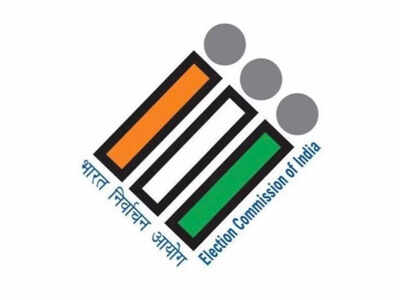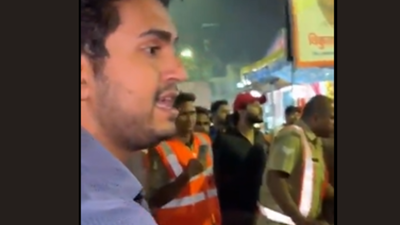Bihar polls: Friendly fights or frayed ties? Mahagathbandhan’s unity faces reality check | India News

NEW DELHI: The opposition Mahagathbandhan in Bihar is showing visible signs of internal tensions ahead of the 2025 assembly elections. The coalition, comprising the Rashtriya Janata Dal (RJD), Congress, and Left parties, has struggled to finalise seat-sharing arrangements, resulting in overlapping nominations, last-minute withdrawals, and what leaders describe as “friendly fights” across several constituencies.At the centre of the friction lies the distribution of Bihar’s 243 assembly seats among alliance partners. The RJD, the dominant party in the bloc, has fielded 143 candidates, while Congress is contesting 61 seats and the remaining seats are being shared among the CPI(ML) and smaller allies.In several constituencies, including Vaishali and Darbhanga, both RJD and Congress candidates have entered the fray, creating confusion within local units.In Darbhanga’s Gaura Bauram seat, for instance, an RJD nominee remained in the contest even after the constituency was allocated to the Vikassheel Insaan Party (VIP) following last-minute negotiations.With the nomination deadline already over for Phase 1, the candidate could not withdraw, forcing RJD leaders to campaign in a seat technically assigned to an ally. The withdrawal date for Phase 2 ends on Thursday.A similar overlap has been reported in parts of the Vaishali district, where local committees of both RJD and Congress have announced nominees despite attempts by the central leadership to coordinate. Reports say the absence of a formal, written seat-sharing pact has contributed to these overlaps.Smaller allies ‘sidelined’Smaller partners within the Mahagathbandhan have voiced concern over being sidelined during seat negotiations. The Jharkhand Mukti Morcha (JMM), which was expected to contest a few constituencies in Bihar’s tribal belt, has announced its withdrawal from the alliance’s state-level arrangement. The party has stated that its demands were overlooked and its traditional strongholds, such as Chakai, Katoria, and Pirpainti, were allotted to other partners without prior consultation.The JMM’s exit may have limited numerical impact but weakens the alliance’s presence in tribal-dominated areas along the Bihar–Jharkhand border. Political observers note that these constituencies, though few in number, carry symbolic importance for the alliance’s claim of statewide unity.The coordination challengeAnother factor behind the infighting is the timing of decisions. Seat-sharing talks extended until the final week of nominations, leaving little room for adjustments once candidate lists were announced. According to reports, a compressed timeline led to confusion at the constituency level, with multiple candidates filing papers under different assumptions about which party would ultimately get the seat.Regional hotspotsThe friction is most visible in northern Bihar, particularly in the Darbhanga, Vaishali, and Muzaffarpur regions, where both RJD and Congress have significant local presence and overlapping support bases.In the southern border districts, the fallout from JMM’s withdrawal is expected to be felt in tribal-majority seats, where coordination with Left allies and local independents will be crucial. These regions were earlier part of a planned joint campaign involving RJD and JMM leaders.Implications for the allianceThe immediate concern for the alliance is the possibility of vote-splitting in constituencies where partners are contesting against each other. In Bihar’s closely fought seats, even a small division of votes can alter outcomes.For example, if an NDA candidate secures about 40 per cent of the vote while RJD and Congress share 30 per cent and 25 per cent respectively, the NDA retains the seat despite a combined opposition vote of 55 per cent. Going by the example, if such divisions remain unresolved, it could impact 15–20 constituencies across the state.The ruling NDA has used the situation to question the opposition’s ability to coordinate. Party leaders have remarked that those unable to manage seat-sharing may struggle to run a cohesive government.Efforts at damage controlRJD leader Tejashwi Yadav and senior Congress leaders have begun internal reviews to identify “official” candidates in disputed constituencies. Both parties are reportedly trying to persuade duplicate candidates to withdraw or coordinate campaigns jointly.Leaders within the Mahagathbandhan have maintained that disagreements are “routine” in multi-party coalitions and will be settled before polling.The Mahagathbandhan’s coordination problems, however, have brought to the fore the challenges of managing Bihar’s coalition politics. The contest is expected to remain competitive, but the level of internal cooperation could determine the alliance’s performance in key regions.While the bloc remains intact formally, its internal friction highlights the difficulty of translating national opposition unity into effective ground-level coordination in Bihar.






